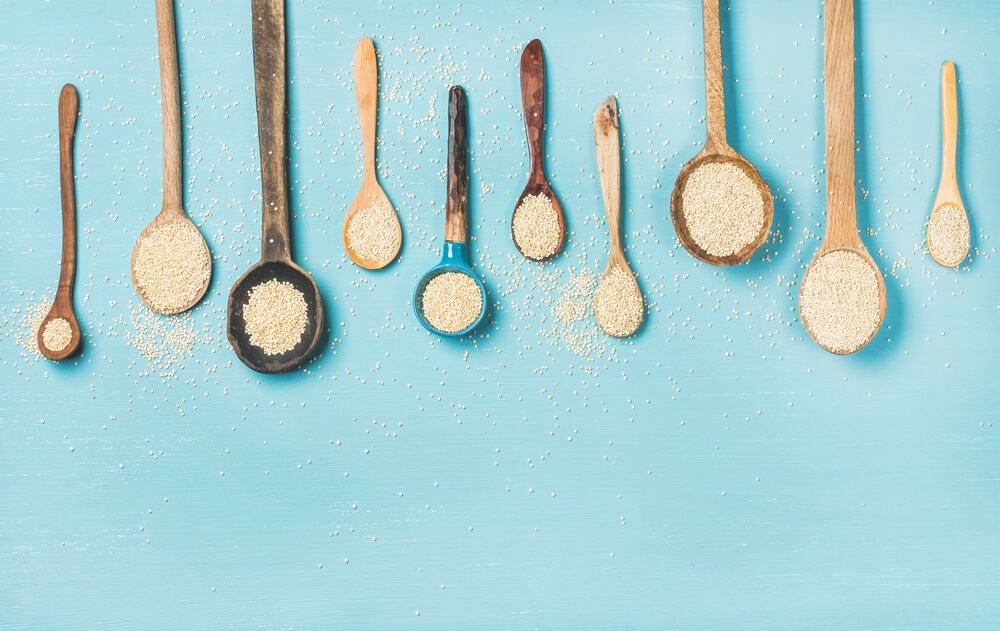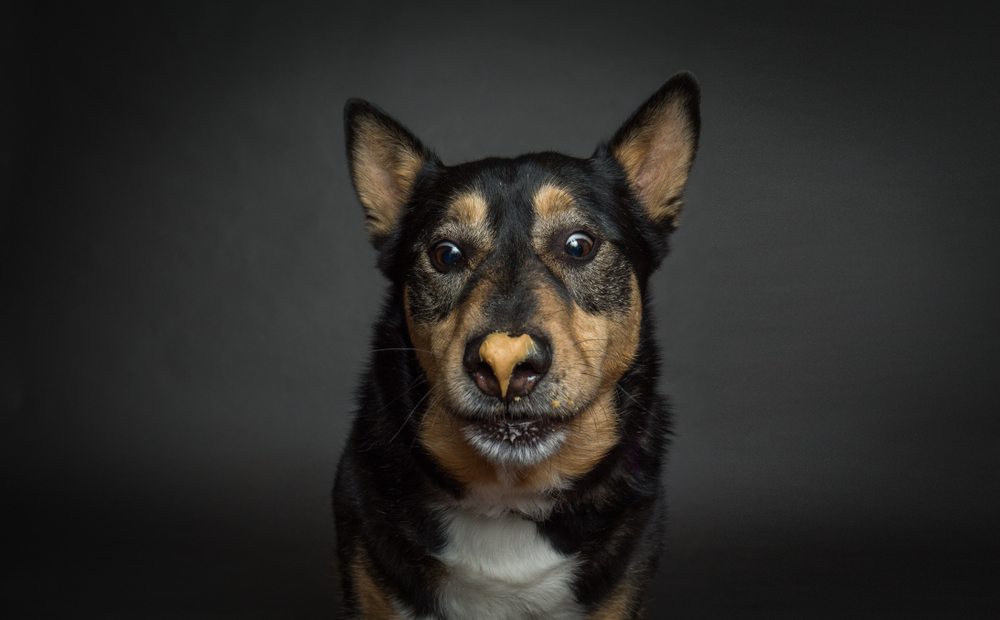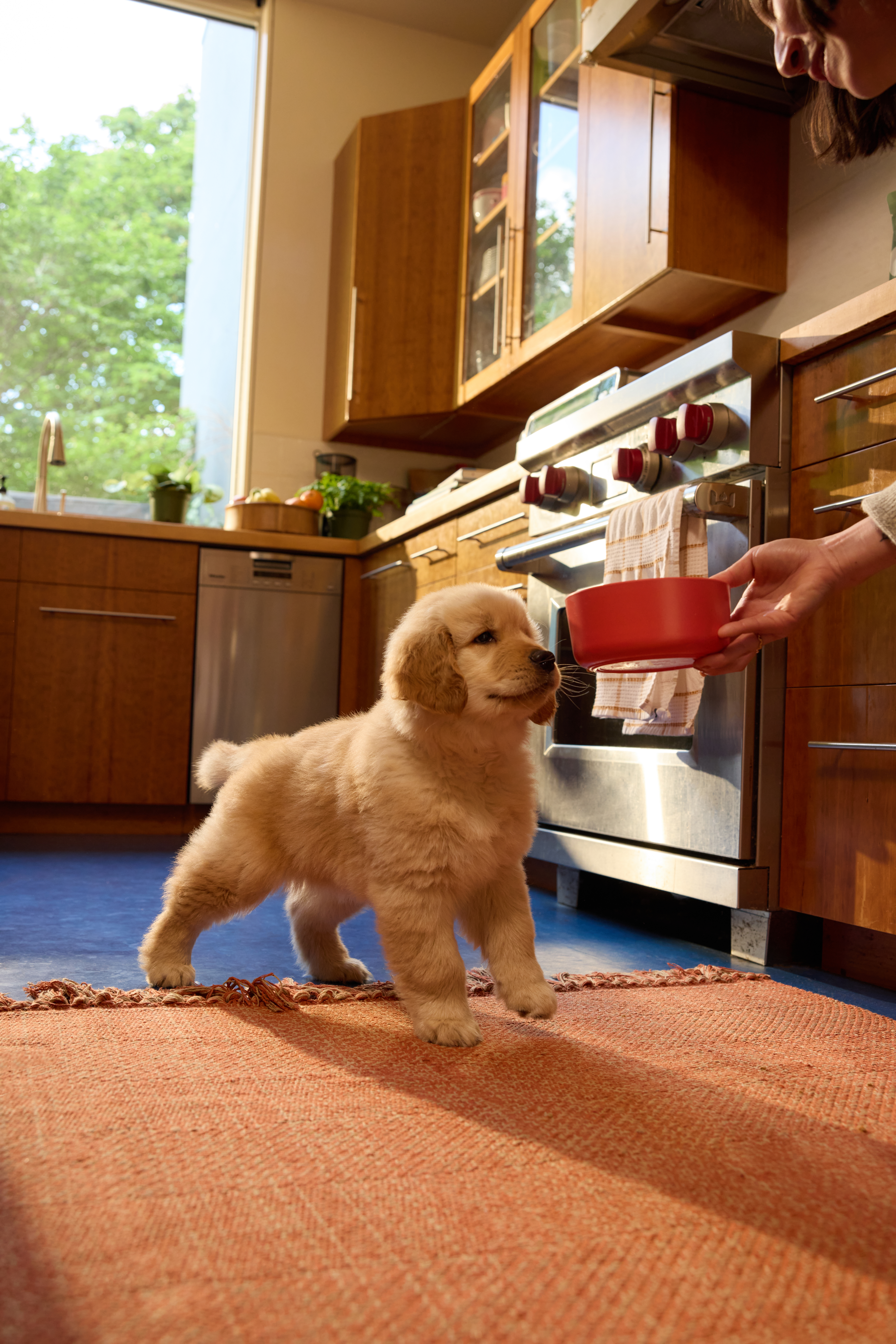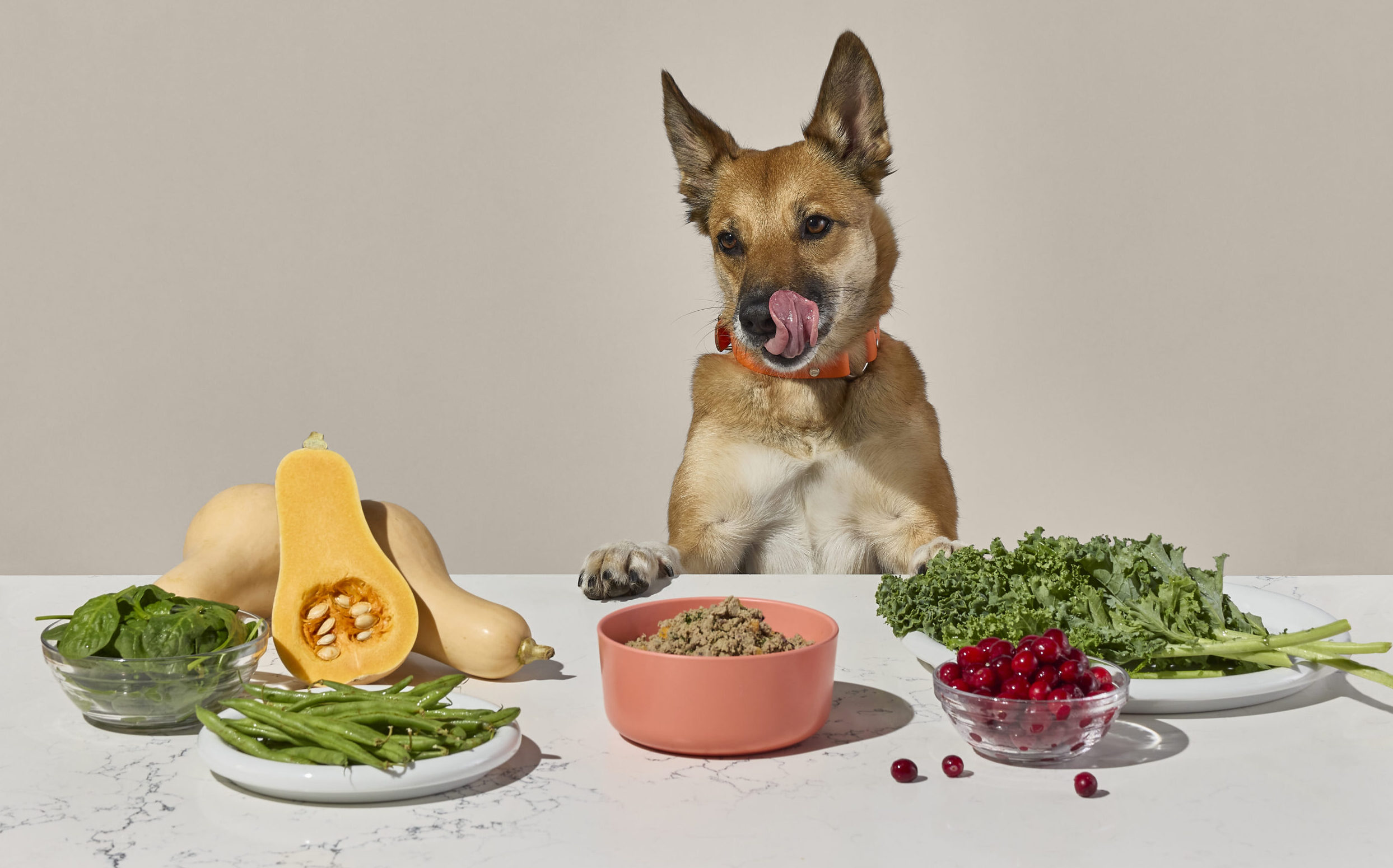Hey Ollie blog readers! We’re offering you an exclusive 60% OFF your starter box! Try now!
Can dogs eat quinoa? The short answer: yes, in moderation. Quinoa (pronounced KEEN-wah) is a protein-rich seed that’s become a superfood for humans, and it can offer benefits for dogs too. Many premium dog foods even include quinoa as a healthy carb alternative to corn or wheat.
But before you scoop some into your pup’s bowl, it’s smart to know how quinoa can help (or harm) your dog, the best ways to serve it, and when to avoid it. In this guide, I’ll break down whether quinoa is good for dogs, how much is safe, and easy ways to add this ancient seed to your dog’s diet.
Your pup may also benefit from a bit of quinoa as well. We did some research to learn about the health benefits of quinoa for dogs, and what you might need to consider before adding it to your pup’s diet.
Can Dogs Eat Quinoa?
Yes, dogs can eat quinoa—and many actually benefit from it. This tiny seed (often mistaken for a grain) is packed with nutrition and is commonly used in high-quality dog foods as a gluten-free alternative to traditional grains like wheat or corn.
Quinoa is rich in plant-based protein, fiber, and key nutrients like magnesium, iron, and B vitamins. It’s also naturally low in fat and has a mild flavor, which makes it an easy add-in for dogs who enjoy variety in their meals.
That said, there are a few things to know before you scoop it into your dog’s bowl:
- Always cook quinoa before serving it. Raw quinoa is difficult to digest and can irritate the stomach.
- Rinse it thoroughly before cooking. This removes saponin—a natural coating that can cause mild digestive upset in some dogs.
- Skip the seasonings. Quinoa should be served plain. Ingredients like garlic, onions, or broth with added salt can be harmful to dogs.
If it’s your dog’s first time trying quinoa, start with a small amount and monitor for any signs of stomach discomfort, such as gas or loose stools. Every dog is different, so it’s smart to introduce any new food slowly. If your pup has known food sensitivities or health concerns, a quick check-in with your vet can help you decide if quinoa fits into their diet.
Is Quinoa Good For Dogs? Is It Safe?
Yes, quinoa can be good for dogs when served in moderation. It’s a nutrient-dense seed that offers a clean source of plant-based protein along with fiber, antioxidants, and essential minerals like magnesium, iron, and zinc. These nutrients support energy levels, muscle function, and overall health, making quinoa a smart addition to some dogs’ diets.
Unlike many traditional grains, quinoa is gluten-free and less likely to cause allergic reactions. It’s also lower on the glycemic index compared to ingredients like white rice, which can help keep blood sugar levels more stable—especially for dogs prone to weight gain or with diabetes.
The fiber in quinoa supports digestion, while the amino acids help with tissue repair and immune function. Just be sure it’s cooked and plain before serving. Quinoa shouldn’t replace your dog’s main source of protein but can be a nutritious supplement to a balanced meal when approved by your vet.
Quinoa isn’t just safe—it can be a healthy addition to your dog’s diet when fed in moderation. It’s loaded with nutrients that support overall wellness, including:
- Complete protein – Quinoa contains all nine essential amino acids, which help support muscle development and tissue repair.
- Dietary fiber – Promotes healthy digestion and regular bowel movements.
- Iron, magnesium, and zinc – These minerals help support immune function, energy production, and metabolic health.
- Antioxidants – Natural compounds in quinoa may help fight inflammation and support long-term cellular health.
One of the standout benefits of quinoa is that it’s gluten-free, making it a solid option for dogs with grain allergies or sensitivities. It also has a lower glycemic index than ingredients like white rice, which means it’s less likely to spike blood sugar—an important factor for dogs managing weight or diabetes.
That said, quinoa shouldn’t replace your dog’s main protein source. It works best as a supplement to a balanced meal, whether mixed into fresh food or offered occasionally as a topper. As with all foods outside your dog’s regular diet, it’s a good idea to consult your vet, especially if your dog has dietary restrictions or a sensitive stomach.
Is Quinoa Dangerous For Dogs?
No, quinoa is not toxic or dangerous for dogs. According to the American Kennel Club, “The edible seed is actually an ingredient in some high-quality dry dog foods. Its strong nutritional profile makes it a healthy alternative to corn, wheat, and soy — starches that are often used to make kibble.”
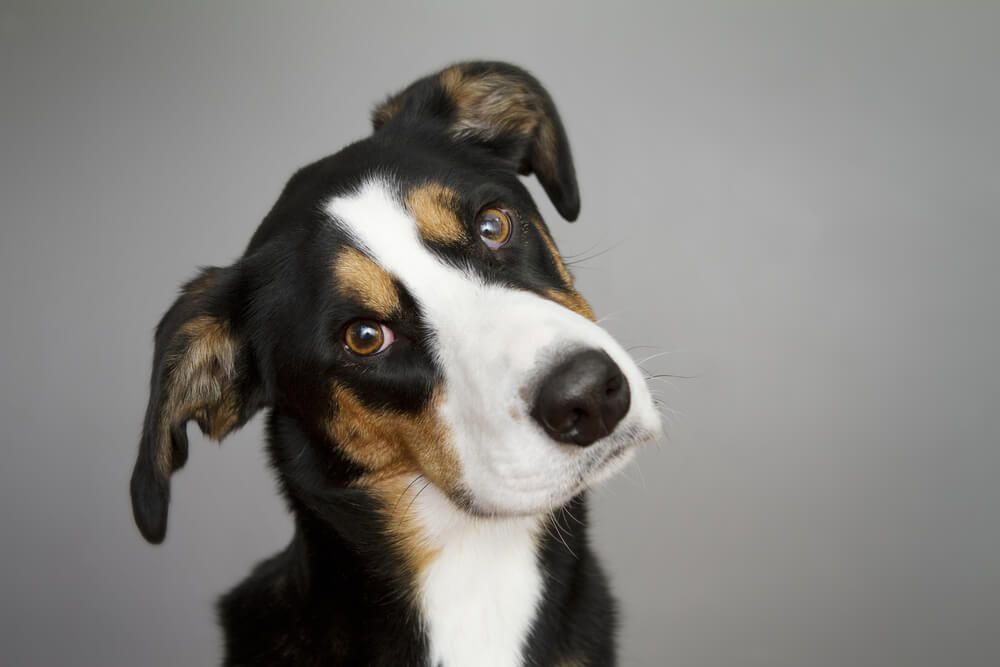
Four potential health benefits of quinoa for dogs
Packed with nutrients
Quinoa is free from gluten, is a good source of insoluble fiber, contains no trans-fats and is a source of the essential fatty acid linoleic acid. It is a great source of antioxidants such as flavonoids, quercetin, and kaempferol. Quinoa also contains B-vitamins such as riboflavin and folate and minerals such as magnesium and iron. This makes it a good ingredient to include in dog food.
Holds healing properties
These are due to the high levels of antioxidants. Studies have shown that antioxidants reduce free radicals, which can prevent some diseases including cancers.
Boosts the cardiovascular system
Like healthy whole grains, quinoa is also good for your pup’s cardiovascular system. If you’re working to keep your dog’s heart-healthy, ask your vet about including quinoa in your dog’s diet.
Helps fight inflammation
Another benefit that can be attributed to high levels of antioxidants, quinoa is good for keeping inflammation at bay. Reduced inflammation is linked to less risk of disease and increased health — another reason to consider adding quinoa to the menu for your dog.
What to watch out for when adding quinoa to your dog’s diet
While quinoa is not toxic to dogs, not every dog can enjoy it. How do you know if your dog is having issues with quinoa? Watch out for these symptoms:
Vomiting
If you see your pup vomiting after eating quinoa, stop giving it to them. You may also want to contact your vet to make sure there isn’t a more serious underlying medical issue.
Drooling
If your dog is drooling after eating quinoa, it could signal and allergic reaction. Contact your vet to discuss the best course of treatment.
Loss of appetite
Obviously, not wanting to eat after a tasty treat like quinoa is not a great sign, you’ll want to work with your vet to get to the bottom of this. The vet will do a quick exam to figure out why your dog might not be hungry and get him the best treatment possible.
One of the main reasons why you want to watch your dog when introducing quinoa is that there is some concern that saponin a chemical naturally found on quinoa could be damaging to dogs. The quinoa plant produces saponin to protect itself from insects, and it’s been suggested that saponin can cause irritation in the intestines of both people and dogs. However, the amount of saponin found on quinoa is typically too small to create any health problems.
There is some possibility that dog digestive systems are more sensitive to saponin than human digestive systems. If you’re concerned about saponin, wash the quinoa before cooking it. This should remove most of it and make it easier on your dog’s stomach.
If your dog generally has a sensitive stomach, they may just not be able to properly digest quinoa. If you think this is a possibility, discuss it with your vet prior to feeding. You don’t want to make your dog sick unnecessarily.
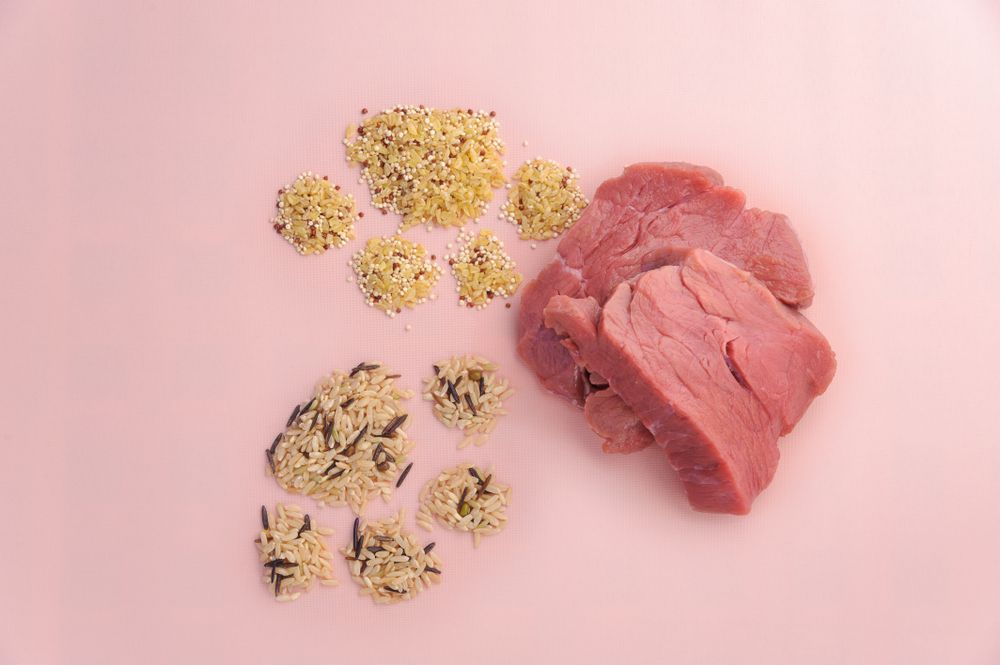
How To Feed Quinoa To Your Dog Safely
If you’re looking to add quinoa to your pup’s diet, make sure you’re not just letting them eat if off of your plate. When quinoa is prepared for the human palate it is usually seasoned with oils, salt, and spices including garlic or even onion. These will make your pup sick, especially the garlic and onions which are toxic to dogs.
To prepare quinoa for your pup, start by giving it a really good rinse. You’ll then boil it in liquid (the ratio should be 1 part quinoa and 2 parts liquid). As far as what liquid to use, water is just fine, but for a flavor boost, you can use your favorite dog-friendly broth made from either bones or just some simmered veggies.
Once the liquid is evaporated, remove the quinoa from the heat. Fluff it with a fork and let it cool. You’re able to serve it to your pup warm, but make sure it isn’t too hot. You can serve it with dog-friendly fruit or veggies, wet or dry food, or a fresh pet food like Ollie.
Homemade Quinoa For Dogs Treat Recipes
If you want to work quinoa into a delicious dog treat recipe, try this one from Kol’s Notes:
Quinoa Crisps with Rosemary Salmon Dog Treats
Ingredients:
- 2 cups canned salmon + water from the can for blending
- 1 1/2 – 2 cups quinoa flour ( make your own)
- 1 cup cooked quinoa
- 2 tbsp. dried rosemary
Let’s do this!
In a blender of a food processor, blend the salmon into a thick paste, adding the water from the salmon can, as needed (you want to use as little as possible).
In a medium bowl, stir together salmon paste, quinoa, and rosemary. Add quinoa flour, as needed, to create a loose, non-sticky dough. (Exactly how much flour you need will depend on how much water you used in the salmon paste.)
Knead together into a loose, non-sticky dough. (If it is still sticky, add quinoa flour until you can work with it.) Place the dough between two layers of parchment paper and roll out to ~1/8 thick. Remove the top layer of parchment. Use a knife or pizza cutter to carefully trim the dough into crackers.
Oven Method:
Place crackers and the parchment onto a baking sheet. Bake at 200F for 3 hours, then flip. Return to the oven and bake for another 2 – 4 hours or until crisp all the way through.
Dehydrator method:
Place crackers on the dehydrator trays. Dehydrate for 6 – 8 hours or until crisp all the way through.
Store in an airtight container, away from moisture. If you’ve dried them all the way through they should have a shelf life of 3 – 4 weeks.
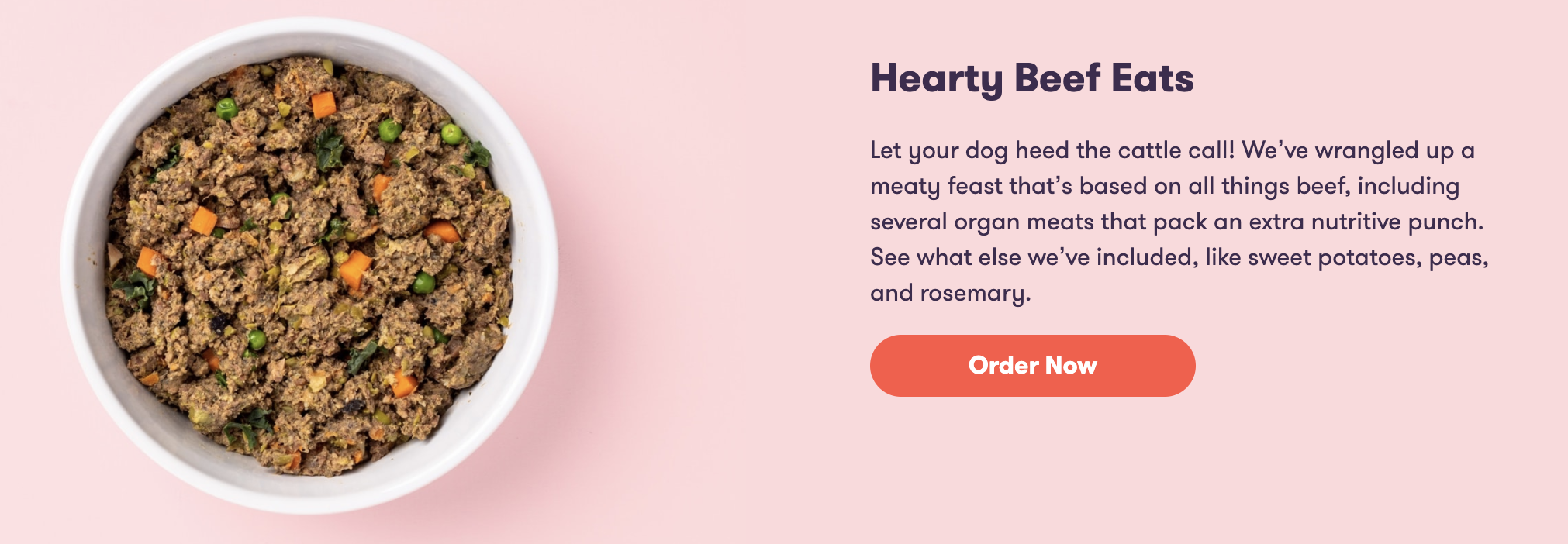
Like any new food, you’ll want to introduce quinoa to your dogs’ diet slowly to avoid upsetting their stomachs. Watch for any adverse reactions and add more to your dog’s diet over the course of 5-7 days until you’ve reached an optimal serving for your dog’s size and activity level. Do not overfeed your dog as it can lead to weight gain and/or nutritional imbalances. If you have questions as to how much quinoa your dog can have in the context of their specific diet, consult your veterinarian or a nutritionist to make a recommendation for your pet. You’ll still need to monitor and adjust until you find the optimal serving size and frequency.
Quinoa vs. Rice for Dogs: Which Is Better?
fs
| Nutrient: | Quinoa (cooked): | White Rice (cooked) |
| Protein: | Higher | Lower |
| Fiber: | Higher | Lower |
| Glycemic Index: | Lower (more stable) | Higher (less stable) |
| Digestibility: | Slightly lower | Higher |
| Allergen Risk: | Very low | Low, but higher in gluten sensitive dogs |
Which is better?
For most healthy dogs, quinoa offers more long-term nutritional benefits than white rice. But for dogs recovering from illness or needing a bland, easy-to-digest meal, rice may be a better short-term option.
Talk to your vet or canine nutritionist about which is best for your dog’s diet, especially if you’re using either as a regular food base or topper.
Can Dogs Eat Quinoa Everyday?
Quinoa is safe for dogs to eat regularly—but like any ingredient, it should be part of a balanced diet, not the main event.
Feeding your dog small amounts of plain, cooked quinoa daily is generally fine for healthy pups, especially when it’s used as a topper or mix-in rather than a main protein source. Just be sure to:
- Serve it unseasoned and fully cooked
- Avoid overfeeding, especially for smaller dogs
- Watch for any signs of digestive upset or food sensitivity
Quinoa can provide added fiber, plant-based protein, and essential minerals to support energy, muscle function, and digestive health. For dogs on a fresh food plan, quinoa may already be included in controlled amounts as part of a nutrient-rich formulation.
That said, not every dog needs quinoa every day. If your dog is already getting a complete and balanced diet (like Ollie’s fresh meals), adding extra quinoa might not be necessary—and in some cases, could throw off the nutritional balance.
If you’re considering adding quinoa daily, especially in larger portions, talk to your vet to make sure it aligns with your dog’s specific dietary needs.
Frequently Asked Questions About Quinoa For Dogs
Is quinoa better than rice for dogs?
Quinoa has more protein and nutrients than plain white rice. According to the American Kennel Club (AKC), “Quinoa is sometimes used in high-quality dry dog foods as an alternative to corn, wheat, and soy.” If your dog tolerates quinoa well, it can be a healthy swap for rice.
Can quinoa upset a dog’s stomach?
Yes, some dogs have trouble digesting quinoa. If it’s not cooked properly or given in large amounts, quinoa can cause vomiting, diarrhea, or tummy discomfort. Always rinse quinoa before cooking and serve it plain, no salt, butter, or seasoning.
How much quinoa can I give my dog?
Start small, a tablespoon for small dogs, or a quarter cup for bigger dogs, mixed into their usual meal. Watch for any signs of stomach upset, and always ask your vet if you’re not sure how much is safe for your pup.
What’s the best way to cook quinoa for dogs?
Rinse the quinoa to remove bitter saponins, then boil it in plain water until fully cooked and fluffy. Let it cool completely before mixing it into your dog’s food. Skip any seasonings, plain is best.
Can dogs eat cooked quinoa?
Yes! Dogs should only eat quinoa that’s fully cooked and plain. Raw or undercooked quinoa is hard to digest and can cause stomach trouble.
Can puppies eat quinoa?
Small amounts of cooked quinoa are usually safe for puppies, but it’s best to check with your vet first. Puppies have sensitive stomachs and may need more gentle carbs like rice or oats.
Can dogs eat red quinoa or black quinoa?
Yes, red and black quinoa are safe for dogs if cooked properly. All quinoa varieties are similar in nutrition, just rinse well and skip seasonings.
Is quinoa good for dogs with allergies?
Sometimes! Quinoa is gluten-free and can be a good carb choice for dogs with grain sensitivities. Just add it slowly and watch for any signs of a reaction.
The Ollie blog is devoted to helping pet parents lead healthier lives with their pups. If you want to learn more about our fresh, human-grade food, check out MyOllie.com.
Tagged As:

The nutrition your dog needs,
the food they want.

Enjoying our articles? Subscribe our Newsletters and get new articles directly to your inbox
You might also like
21 July 2025
6 MINS READ
Can Dogs Eat Nuts? Which Nuts Are Safe & Serving Guide
Can dogs have nuts? Some nuts are fine in moderation, but others can cause serious harm. This quick guide breaks down which nuts are safe for dogs, which to skip, and how to feed nut butters respon…
18 July 2025
4 MINS READ
New Puppy Diet Recommendations for Healthy, Happy Growth
As a new pup parent, one of the biggest ways you can support your puppy’s long-term health is by providing the right nutrition. A puppy’s dietary needs are different from an adult dog’s, and…
by Ollie Pets
18 July 2025
5 MINS READ
How Human-Grade Dog Food Benefits Your Pup’s Health and Happiness
You’ve likely heard the term “human-grade” dog food, but what does it really mean, and is it worth it? Choosing human-grade food can be a significant investment for your dog’s long-term he…
by Ollie Pets
